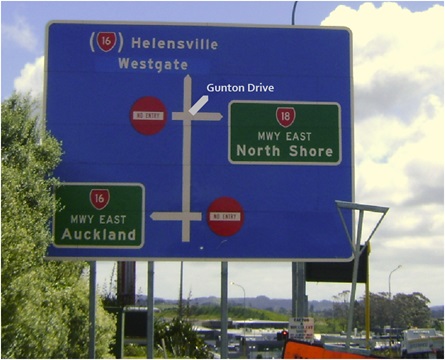Auckland Transport (AT) had a series of user complaints regarding the safety of Maki Street, which has resulted in AT recently stopping traffic turning right from Fred Taylor Road into Maki Street and hence into the North-West Shopping Centre development. This action had been undertaken by AT as a trial until February 2017.
In 2015, the SH18 off ramp was amended, as an interim solution, to aid traffic using SH18 northbound to enter the North-West Shopping Centre. The Agency were concerned that stopping the right turn movement would change movements into the shopping centre and potentially increase movements into Gunton Drive, with possible consequential increase in vehicle movements into the North West Shopping Centre from the off ramp. It was also important to ensure signage remained accurate on the State Highway (SH) network. There was considerable pressure on the Agency to assess the impact this closure was having as soon as possible and that all changes were made before the increase in traffic expected due to Christmas shopping and January sales.
Resolve Group were asked to urgently review current SH signage and road markings, to confirm the existing signs and road markings provided clear information for SH road users wishing to gain access into the North-West Shopping Centre and to see if there were additional ‘quick win’ options that could be implemented.
Resolve found there were some signs and road markings which could be improved at the SH18/Hobsonville Rd junction and also recommended:
- A safety review of all signs and road markings proposals
- A traffic modelling exercise, to be undertaken by others, to determine the long- and short-term impacts of increased use of Gunton Drive with Maki St closed
Resolve also reviewed the traffic management requirements with both AT and the AMA to ease the process for gaining access to the road network and associated traffic management requirements in order to speed up the overall process.




